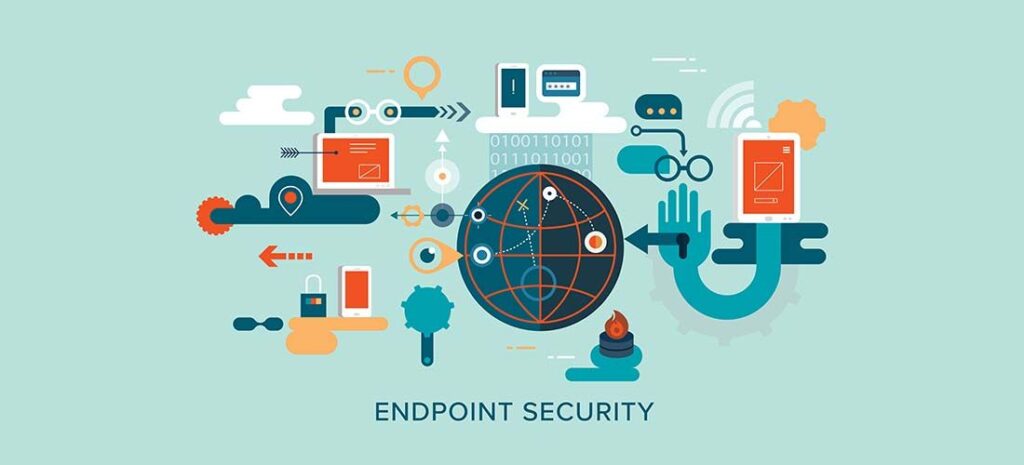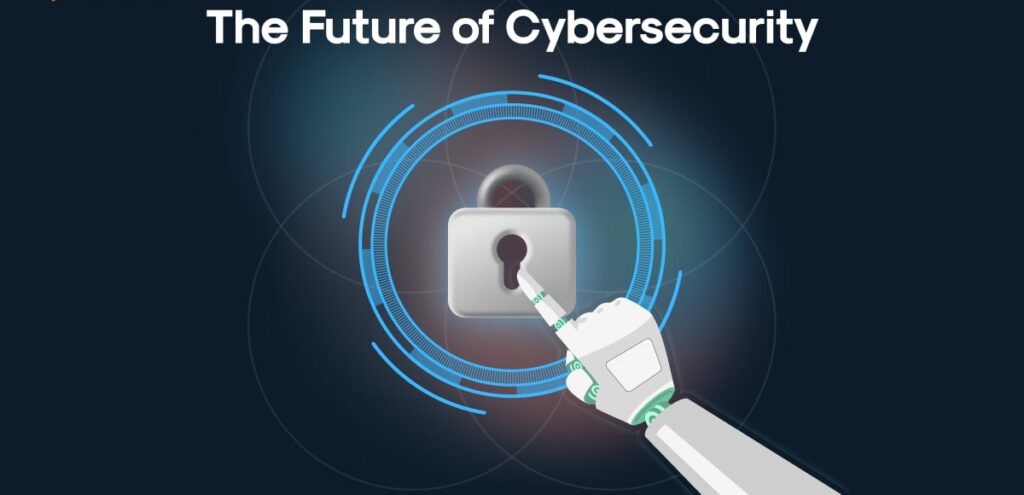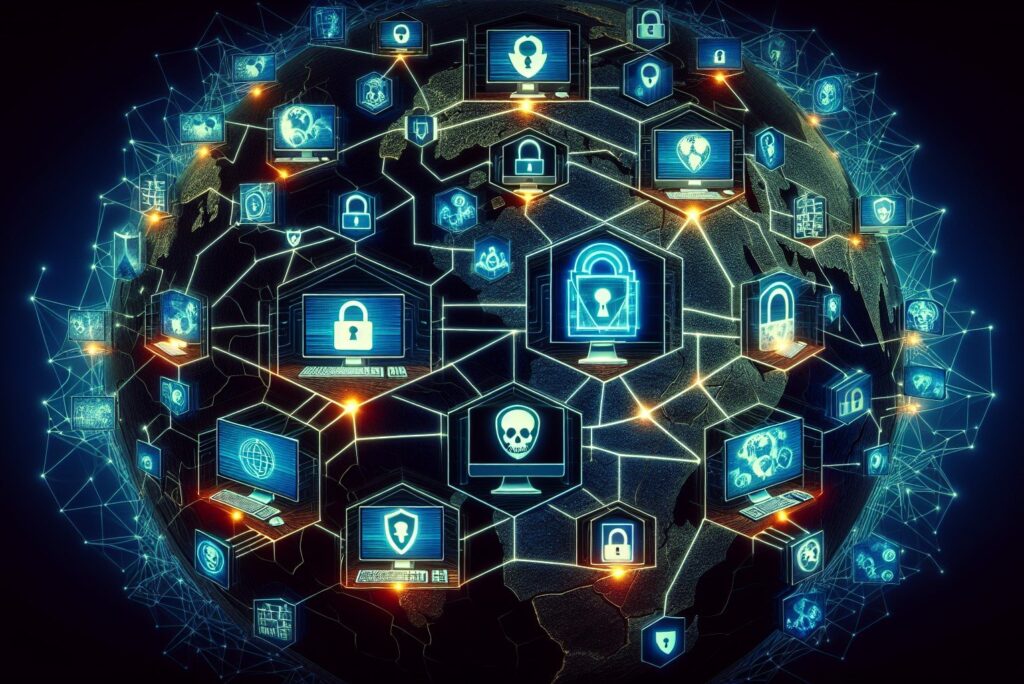Understanding Cybersecurity: Safeguarding Our Digital World
Introduction
In a world an increasing number of pushed via the usage of technology, the importance of cybersecurity can not be overstated. Cybersecurity encompasses the practices, generation, and strategies which might be designed to shield networks, gadgets, and statistics from unauthorized get admission to, robbery, or damage. As our dependence on virtual structures grows, so does the danger of cyber threats. This article goals to offer a whole evaluate of cybersecurity, exploring its importance, the threats we are facing, and effective strategies for safety.
Chapter 1: The Importance of Cybersecurity
Cybersecurity is essential for several reasons:
1. Protection of Sensitive Data: Individuals and agencies keep huge portions of personal and financial statistics online. Cybersecurity measures help protect this records from unauthorized get entry to and breaches.
2. Maintaining Trust: For corporations, patron agree with is paramount. A single facts breach can bring about loss of popularity, consumer loyalty, and in the end, sales.
3. Regulatory Compliance: Many industries are trouble to strict regulations concerning records protection (e.G., GDPR, HIPAA). Non-compliance can bring about hefty fines and criminal consequences.
4. Operational Continuity: Cyber incidents can disrupt organization operations. Effective cybersecurity techniques ensure that groups can maintain continuity and get higher rapid from incidents.
5. National Security: On a bigger scale, cybersecurity is vital for protecting important infrastructure and countrywide safety pastimes from cyber espionage and assaults.
By statistics the importance of cybersecurity, stakeholders can higher understand the need for complete protection strategies.
Chapter 2: Common Cyber Threats
Cyber threats may be categorised into numerous commands, every with terrific tendencies:
- Malware: This encompasses severa malicious software program program sorts designed to harm or make the most gadgets and networks. Common forms of malware consist of:
- Viruses: Attach themselves to easy files and spread in the path of a computer machine.
- Worms: Replicate themselves to spread to at least one-of-a-type computer structures on the identical time as now not having to attach to documents.
- Trojan Horses: Disguise themselves as legitimate software software to trick clients into putting in them.
- Phishing: Phishing assaults often incorporate fraudulent emails or web sites that impersonate legitimate groups to trick humans into supplying touchy facts. Techniques encompass:
- Spear Phishing: Targeting unique people or companies.
- Whaling: Aimed at excessive-profile desires, inclusive of executives.
- Ransomware: This kind of malware encrypts a victim’s statistics, rendering it inaccessible till a ransom is paid. Ransomware attacks have surged in latest years, with incredible instances affecting hospitals and municipal governments.
- Denial-of-Service (DoS) Attacks: These assaults overwhelm a community or company with site visitors, rendering it unavailable to clients. Distributed Denial-of-Service (DDoS) attacks use multiple systems to launch a coordinated assault.
- Insider Threats: These get up at the same time as people inside an agency misuse their get entry to to sensitive information. This may be intentional, as in the case of statistics robbery, or unintended, collectively with unintentional information exposure.
Understanding the ones threats is the first step in growing powerful mitigation strategies.
Chapter 3: Cybersecurity Frameworks
Frameworks provide dependent strategies to managing cybersecurity risks. Notable frameworks encompass:
- NIST Cybersecurity Framework: Developed by way of way of the National Institute of Standards and Technology, this framework includes five center features:
1. Identify: Understanding and coping with cybersecurity dangers.
2. Protect: Implementing safeguards to limit the effect of ability incidents.
3. Detect: Developing talents to perceive cybersecurity sports activities.
4. Respond: Taking movement regarding detected incidents.
5. Recover: Maintaining plans for resilience and recovery of services after an incident.
- ISO/IEC 27001: This global vast offers a scientific approach to handling touchy facts, ensuring its confidentiality, integrity, and availability. Organizations may be certified in competition to this preferred, demonstrating their determination to statistics security.
Adopting the ones frameworks allows corporations create a lifestyle of safety and systematically deal with their cybersecurity desires.
Chapter 4: Network Security
Network safety includes measures to protect the integrity and usability of network and statistics. Key components encompass:
1. Firewalls: These gadgets or software application software applications show incoming and outgoing network site visitors and determine whether or not or now not to allow or block particular website online visitors based totally mostly on predetermined protection rules.
2. Intrusion Detection Systems (IDS) and Intrusion Prevention Systems (IPS): IDS video display gadgets network website site traffic for suspicious activity and signals directors, at the same time as IPS actively blocks detected threats.
3. Virtual Private Networks (VPNs): VPNs create a stable connection over the net, encrypting facts and ensuring steady conversation for a long way flung personnel.
4. Access Control: Implementing strict get admission to controls guarantees that amazing prison customers can get right of entry to unique networks or information, lowering the threat of unauthorized get right of access to.
5. Network Segmentation: Dividing networks into segments can restriction the spread of assaults and reduce the assault ground.
Organizations must constantly display screen and update their community safety functions to address evolving threats.
Chapter 5: Application Security
Application safety involves measures taken at a few degree inside the software improvement lifecycle to save you protection vulnerabilities. Key practices consist of:
1. Secure Coding Practices: Developers want to stick to consistent coding pointers to decrease vulnerabilities, which encompass SQL injection and move-internet website scripting (XSS). Training on sturdy coding standards is important.
2. Regular Security Testing: Conducting vulnerability exams and penetration checking out allows discover and deal with safety weaknesses in advance than they may be exploited.
3. Patch Management: Keeping packages and systems up to date is vital. Timely application of safety patches addresses seemed vulnerabilities that attackers may also want to take advantage of.
4. Application Firewalls: Web software firewalls (WAFs) protect applications thru filtering and tracking HTTP site visitors among an internet software program and the Internet.
5. User Input Validation: Implementing rigorous validation of client inputs can assist prevent injection assaults and specific vulnerabilities.
By prioritizing software program protection, organizations can extensively lessen the hazard of records breaches and enhance their everyday protection posture.
Chapter 6: Endpoint Security

Endpoints are regularly goals for cybercriminals because of their large use and ranging tiers of protection. Effective endpoint protection techniques encompass:
1. Antivirus and Anti-malware Software: Regularly up to date antivirus applications can come across and eliminate malware earlier than it reasons harm.
2. Endpoint Detection and Response (EDR): EDR solutions provide actual-time tracking and reaction skills for endpoint threats.
3. Mobile Device Management (MDM): MDM solutions make certain that best criminal gadgets can get admission to company data, allowing the enforcement of protection regulations on mobile devices.
4. User Awareness Training: Employees must be knowledgeable about endpoint protection practices, such as recognizing phishing tries and steady browsing conduct.
5. Regular Updates and Patching: Ensuring that every one devices have the contemporary-day working system and alertness updates allows close vulnerabilities that might be exploited.
Given the upward push of a long way flung artwork and personal device utilization, preserving strong endpoint safety is greater essential than ever.
Chapter 7: Data Protection
Data safety is important for protective touchy facts from unauthorized get entry to and breaches. Key strategies include:
1. Data Encryption: Encrypting statistics at rest and in transit ensures that in spite of the truth that statistics is intercepted, it remains unreadable without an appropriate decryption keys.
2. Access Controls and Identity Management: Implementing role-primarily based absolutely virtually get proper of access to manipulate (RBAC) guarantees that customers pleasant have get admission to to the records essential for his or her roles, minimizing the danger of facts breaches.
3. Data Loss Prevention (DLP): DLP era display display screen and manage the movement of touchy information, preventing unauthorized sharing or loss.
4. Regular Backups: Implementing regular records backup strategies guarantees that important records may be restored inside the event of a information breach or ransomware assault.
5. Compliance with Regulations: Organizations ought to comply with hints regarding facts safety, in conjunction with GDPR and HIPAA, to keep away from prison outcomes and ensure superb practices.
Effective statistics protection measures no longer quality mitigate dangers however also foster consumer do not forget and self guarantee.
Chapter 8: Cybersecurity Policies and Governance
Establishing complete cybersecurity policies is vital for any organization. Key components of powerful policies encompass:
1. Acceptable Use Policy: This file outlines ideal behaviors and practices for employees whilst the use of agency assets, assisting save you misuse.
2. Incident Response Policy: This outlines strategies for detecting, responding to, and recuperating from cybersecurity incidents, making sure that everybody is aware of their roles and obligations.
3. Compliance Policy: Ensuring adherence to applicable crook hints, guidelines, and necessities is vital. This insurance outlines the steps corporations take to stay compliant.
4. Security Awareness Training Policy: Regular training durations assist teach employees about cybersecurity risks and notable practices, fostering a way of life of protection awareness.
5. Risk Management Policy: This insurance defines the agency’s method to identifying, assessing, and mitigating cybersecurity risks.
By growing and imposing those policies, groups can create a fixed up method to cybersecurity that complements commonplace safety.
Chapter 9: Incident Response
An effective incident reaction plan is important for minimizing damage in the course of a cyber incident. Key factors embody:
1. Preparation: Establish a dedicated incident response agency and behavior ordinary education and simulations to make certain readiness.
2. Detection and Analysis: Implement monitoring gadget to fast become aware of capability incidents and examine their impact.
3. Containment, Eradication, and Recovery: Develop smooth strategies for maintaining aside affected structures, disposing of threats, and restoring operations to regular.
4. Post-Incident Review: Conduct a thorough evaluation of the incident to discover training located and beautify destiny responses.
5. Communication Plan: Establish easy communique protocols for informing stakeholders, such as employees, clients, and regulators, approximately incidents.
A properly-organized commercial enterprise organization can reply to incidents greater correctly,
minimizing downtime and ability damages.
Chapter 10: The Role of Cybersecurity Awareness Training
Human mistakes is often the weakest hyperlink in cybersecurity. Regular schooling and focus applications can significantly beautify an business enterprise’s protection posture. Key factors encompass:
1. Phishing Simulations: Conduct simulated phishing assaults to teach personnel on spotting and responding to actual threats.
2. Secure Password Practices: Educate employees approximately the significance of robust passwords and the use of password managers.
3. Incident Reporting Procedures: Ensure employees realize a manner to report suspicious sports sports or ability protection incidents.
4. Regular Refreshers: Provide ongoing training to keep safety practices glowing in personnel’ minds and adapt to new threats.
5. Creating a Security Culture: Encourage open discussions approximately protection and praise personnel for demonstrating right protection practices.
By fostering a way of life of safety attention, companies can empower personnel to behave due to the truth the number one line of defense in competition to cyber threats.
Chapter 11: Emerging Trends in Cybersecurity
The cybersecurity panorama is always evolving. Key tendencies to study encompass:
1. Artificial Intelligence (AI): AI is being increasingly utilized for hazard detection and reaction, enhancing safety functions however furthermore posing risks as adversaries undertake similar technologies.
2. Zero Trust Architecture: This approach operates on the precept of “in no manner take delivery of as actual with, continuously verify,” requiring strict identification verification for all customers, gadgets, and applications, no matter their vicinity.
3. Supply Chain Security: With developing attacks targeted on 1/3-party companies, groups ought to ensure that their deliver chains adhere to strong protection necessities.
4. Cloud Security: As companies migrate to cloud offerings, making sure records protection in the cloud is paramount. This consists of implementing sturdy get right of access to controls and encryption.
5. Regulatory Changes: New policies and requirements are growing globally, affecting how agencies manipulate cybersecurity and information safety.
Staying informed about the ones developments is essential for adapting protection techniques and keeping sturdy defenses.
Chapter 12: The Future of Cybersecurity

The future of cybersecurity can be standard by using using manner of technological upgrades and the increasing sophistication of cyber threats. Key troubles include:
1. Collaboration: Organizations, governments, and academia need to work together to proportion hazard intelligence and boom complete strategies to fight cyber threats.
2. Continuous Improvement: Cybersecurity isn’t always a one-time try however a non-prevent way that requires ordinary exams, updates, and education.
3. Investing in Talent: The cybersecurity abilities hole is a big assignment. Organizations ought to invest in training and development to ensure they have got the knowledge vital to protect in opposition to rising threats.
4. Emphasizing Resilience: Building resilience into cybersecurity techniques will permit companies to evolve to and get over incidents extra efficiently.
5. Public Awareness: Increasing public reputation approximately cybersecurity dangers and terrific practices can assist people higher shield themselves on line.
By prioritizing those concerns, we are able to create a safer virtual worldwide for simply every person.
Conclusion
Cybersecurity is a complex and dynamic area that requires non-stop interest and version. As technology evolves, so do the techniques of cybercriminals. By know-how the threats and enforcing sturdy strategies, we’re able to collectively protect our virtual international, making sure it remains a steady area for humans and companies alike. Embracing a subculture of cybersecurity interest and investing in powerful era is probably critical as we navigate the stressful situations in advance.



1 thought on “Understanding Cybersecurity: Safeguarding Our Digital World 2024”